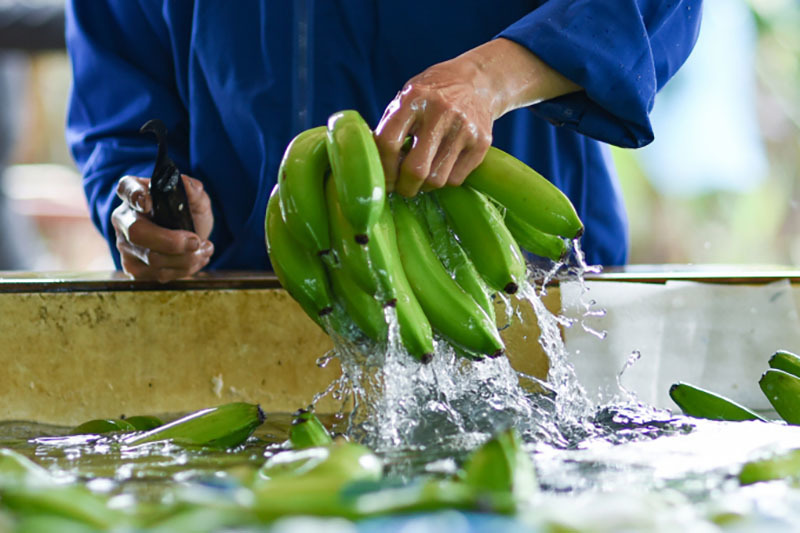
“China is no longer a market that is easy to please,” said Ngo Xuan Nam, Deputy Director of SPS Vietnam, amid a series of new regulations set by China on selling farm produce and food to the Chinese market.
According to Nam, China released 42 notices on the changes with regulations on food safety and plant and animal quarantine in the first 10 months of 2021.
Most recently, China released the new standard GB 2763-2021, setting 10,092 limits on maximum residue levels for 564 plant protection products on a list of 376 foods.
As such, there are 81 more plant protection chemical products in the new standard and 2,985 more plant protection residue limits (42 percent).
Huynh Tan Dat, Deputy Director of the Plant Protection Department (PPD), said China has changed many regulations on plant quarantine and food safety applied to imports. They are tightly controlling imports across border gates, and negotiating opening the door for each category of products.
In addition, China now controls imports under the protocol mode, and asks exporters to declare growing area codes and packaging facilities.
Notably, China's list of plant pests has 500 species, including many common pests, often associated with Vietnam’s fresh fruit exports.
According to Pingxiang International Fruit Association in Guangxi, China, 100 percent of Vietnam’s fruit exports to China have to undergo inspection, while the proportion is just 30 percent for Thai products.
NAFIQAD’s (National Agro-Forestry-Fisheries Quality Assurance Department) Deputy Head Le Ba Anh said that China inspects for coronavirus on live and frozen seafood packs and means of transport. This causes difficulties for export companies as they have to pay for storage fees while waiting at ports.
“The number of seafood consignments exported to China being given warnings is increasing rapidly,” he said, advising companies to be cautious about the food additives and seafood diseases.
Local authorities, businesses confused
Nguyen Lan Duong, President of Hoa Viet International Agriculture, said there should be a specific strategy on branding Vietnam’s farm produce.
However, she said, the building of brands should start from managing the quality of farm produce, from the cultivation, harvesting, processing to the packing and transportation.
State agencies need to set up centers and taskforces in charge of guiding enterprises, cooperatives and local agencies to follow necessary procedures as required by the Chinese market. Businesses are willing to pay for specific guidance.
For the immediate time, Huong asked SPS, PPD and relevant agencies to release documents on how to follow the required procedures for every market and every product.
Dinh Thi Phuong Khanh, Deputy Director of the Department for Agriculture and Rural Development of Long An, which grows dragon fruit for export, said the province has granted 69 growing area codes to serve exports to China.
“We hope we can have documents and illustrated images to disseminate policies to businesses,” Khanh said.
Deputy Director of Binh Thuan Department of Agriculture and Rural Development Phan Van Tan said enterprises are confused about the new regulations, and so are officers.
Le Thanh Hoa, Director of SPS Vietnam, said a lot of changes have been made in the last years to regulations on food safety and biosafety applied to food and farm imports to China. Decrees 248 and 249 are two new legal documents. However, he thinks the two decrees don’t have a big impact on agricultural enterprises.
Decree 249 says enterprises have to take responsibility for food safety even when products have entered China. Vietnam’s businesses need to choose reliable partners to help with keeping records for at least six months.
Chinese requirements, analysts said, are closer to that of developed countries. Therefore, Vietnam’s businesses need to strictly observe the new regulations to ensure uninterrupted exports.
Tam An

China resumes importing Vietnamese dragon fruit, bananas
China has agreed to resume importing Vietnamese dragon fruit and bananas through the Kim Thanh International Border Gate in Lao Cai province following a hiatus due to COVID-19.

Vietnam-China border trade vibrant despite COVID-19
Lang Son has managed to maintain its role as a main gateway for border trade with the Chinese market, despite the significant impact of the COVID-19 pandemic on commercial services and import and export of goods in the locality.